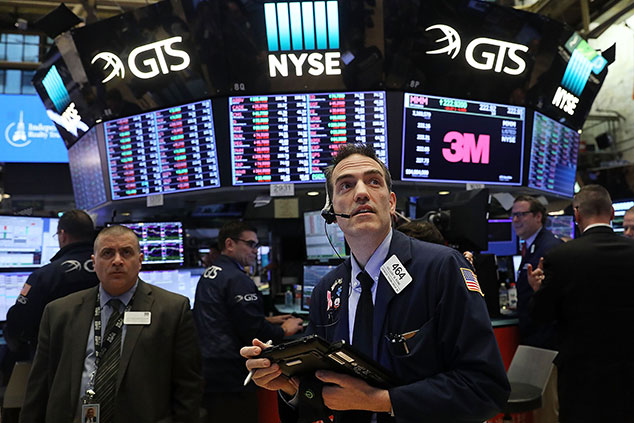
This article is taken from our FREE daily investment email Money Morning.
Every day, MoneyWeek’s executive editor John Stepek and guest contributors explain how current economic and political developments are affecting the markets and your wealth, and give you pointers on how you can profit.
It’s been a hectic week for those of us in the UK.
But this morning it’s time to raise our heads and look beyond our melodramatic little corner of the world.
Because elsewhere, things are – it appears – looking up.
For now, at least.
A good day for “risk-on”
Yesterday, global markets had a good day. By a “good day” what I really mean is that the assets that go up when everyone stops being scared – oil, stockmarkets – went up. And the assets that go up when everyone is scared – precious metals, bond prices – went down. It was a “risk-on” day, rather than a “risk-off” day.
The S&P 500 is now back to being just a few percentage points off its all-time high. So what went right?
Three things. One, the “fear trade” is looking crowded in the short term. A lot of people are long gold. An awful lot of people are long bonds. There’s been a rush to panic-buy. That intensity of panic is hard to sustain for any length of time so there was bound to be a reaction at some point. It just needed a trigger.
Two, China and the US said that they’ll start talking to one another again. Talks are apparently set to start again next month. We’ll see.
Three, some mildly positive economic data made people wake up to the idea that maybe they’re a little bit too worried about a pending recession.
Earlier in the week, data suggested that activity in the US manufacturing sector is shrinking. That was the first such drop in three years, and while it was in line with the rest of the global manufacturing sector, that was hardly comforting.
But yesterday, data also showed that the services sector is growing much more strongly than expected. That’s good news because, ultimately, the US is more dependent on the consumer than on the manufacturer, and the consumer is benefiting both from rising wages and falling interest rates (allowing homeowners to remortgage at cheaper rates, for example).
Now, sometimes markets hate good news, because it means that interest rates are less likely to be cut. Earlier this year, that’s the phase markets were in.
However, today, investors are welcoming any good news they can get, because they’ve grown scared that the Federal Reserve, America’s central bank, is already too late to stop a downturn. As long as there’s still some good economic news rolling in, the Fed may still have time to stop the recession.
That’s a somewhat over-simplistic way to put it, but it’s what appears to be the thinking. Good news won’t stop the Fed from cutting – but it does mean there’s a better chance of evading a downturn.
The market will be watching for news on US jobs
So what’s next? Well, absent more tweets from Donald Trump saying that the whole China deal is off again, the next big data point to watch out for is the US non-farm payrolls this afternoon.
We covered it in today’s “Money Minute”, our new daily 60-second video preview of the day’s big news. Markets are expecting that in the region of 150,000 to 175,000 new staff were taken on by employers last month.
A better-than-expected showing for the less-important ADP private payrolls figure, which came out yesterday, will probably have markets feeling a little more optimistic on the outcome for this afternoon’s official employment figures. However, it’s worth remembering that the ADP doesn’t have a great record of predicting the non-farm figures, so they could still easily disappoint.
It’s also worth remembering that the non-farm payrolls data is not terribly reliable. It is revised frequently, and by significant amounts. And yet investors place a lot of stock in it.
If there’s a surprise, you’ll see markets move accordingly. As I say, investors will be hoping for a big, cheerful number this month – just now they are more concerned about a downturn than they are about the Fed not bailing them out with more cheap money.
So a big gain is likely to be good for markets, particularly if it is accompanied by static wage growth (because the other thing that might make the Fed think twice about raising interest rates is a big and obvious jump in wage inflation).
What about a miss? You’d probably expect to see markets fall on fears that we are heading for a recession, and that the Fed won’t act strongly enough to stop it.
Anyway, none of that should matter to you if you’re just trying to make sure that you invest on a regular basis in decent value assets. However, I do find that it helps you to stick to your plan if you have at least some idea of what’s driving the daily peculiar mood swings of the market. At least then you know what you can safely ignore.